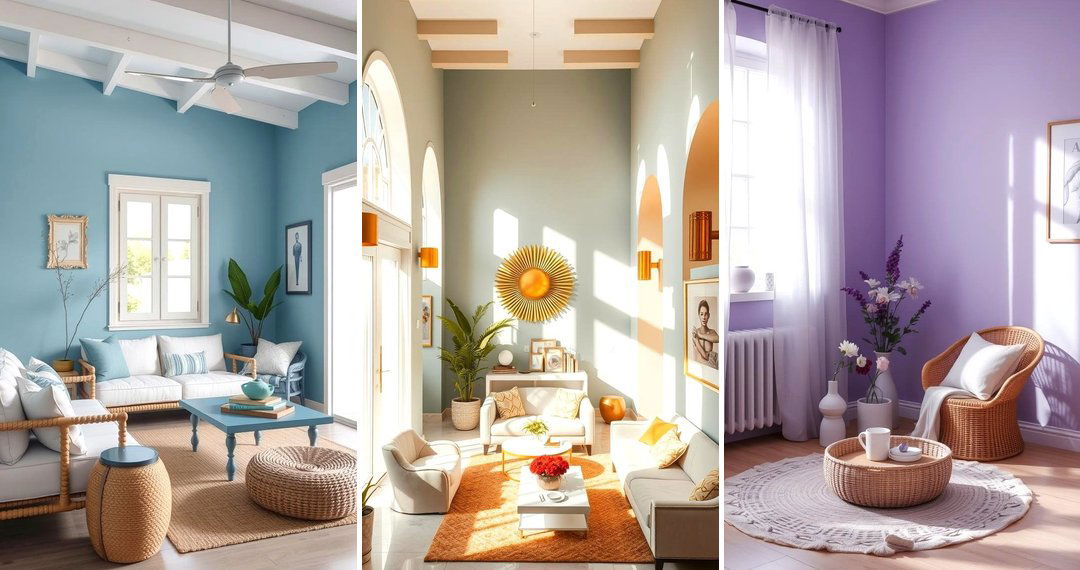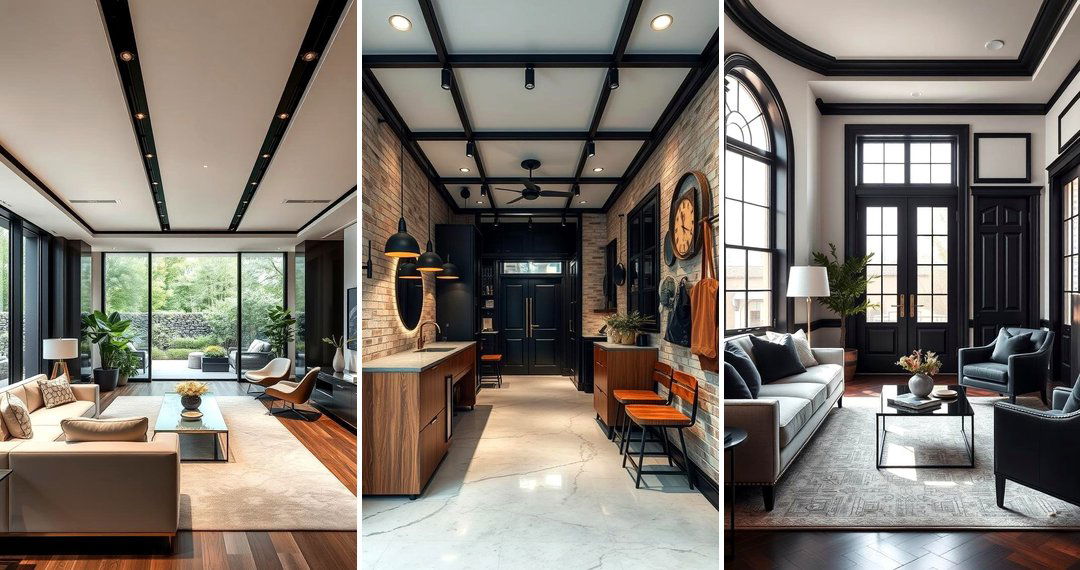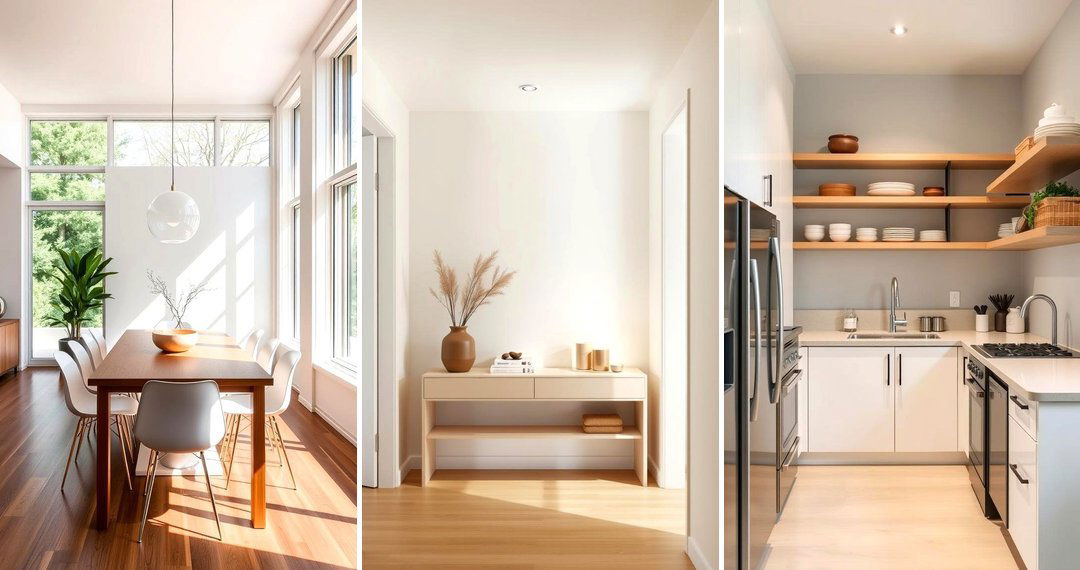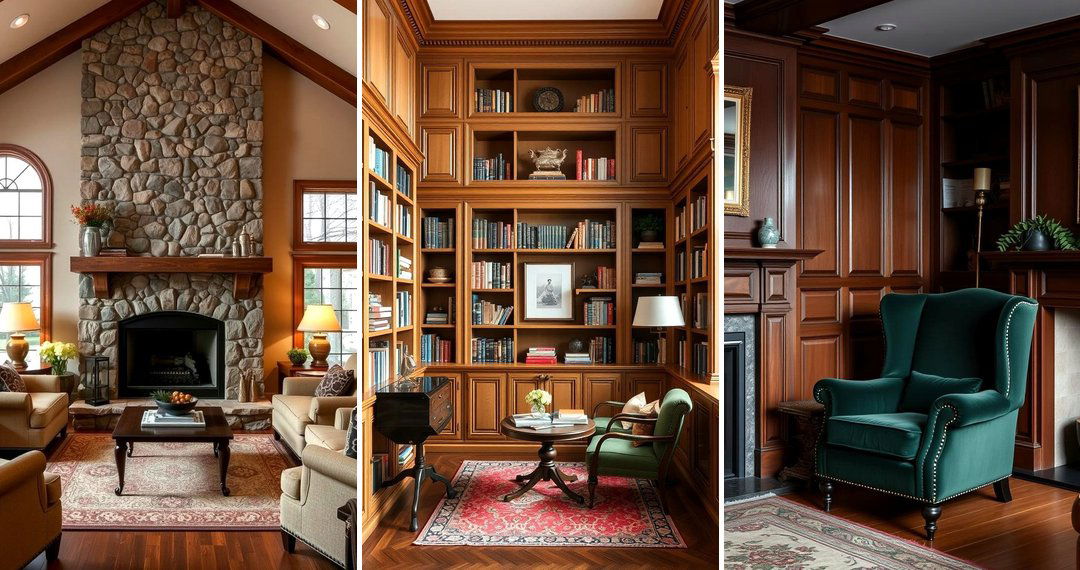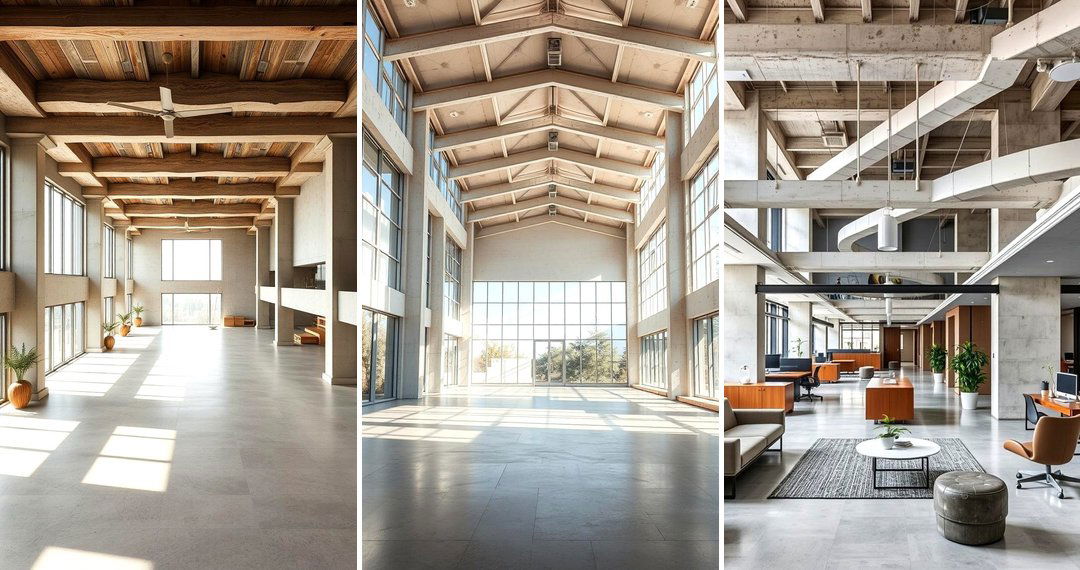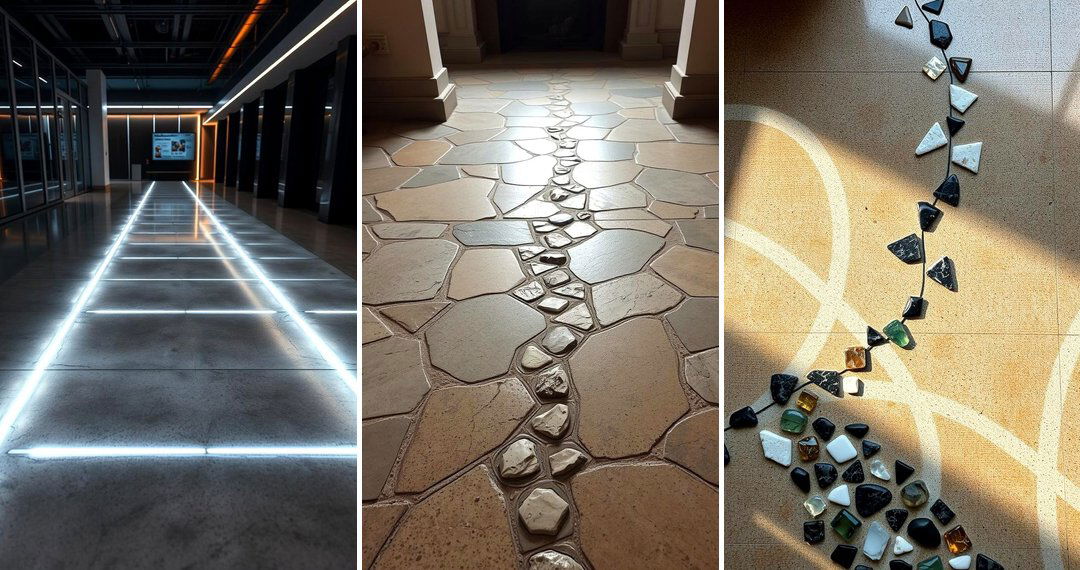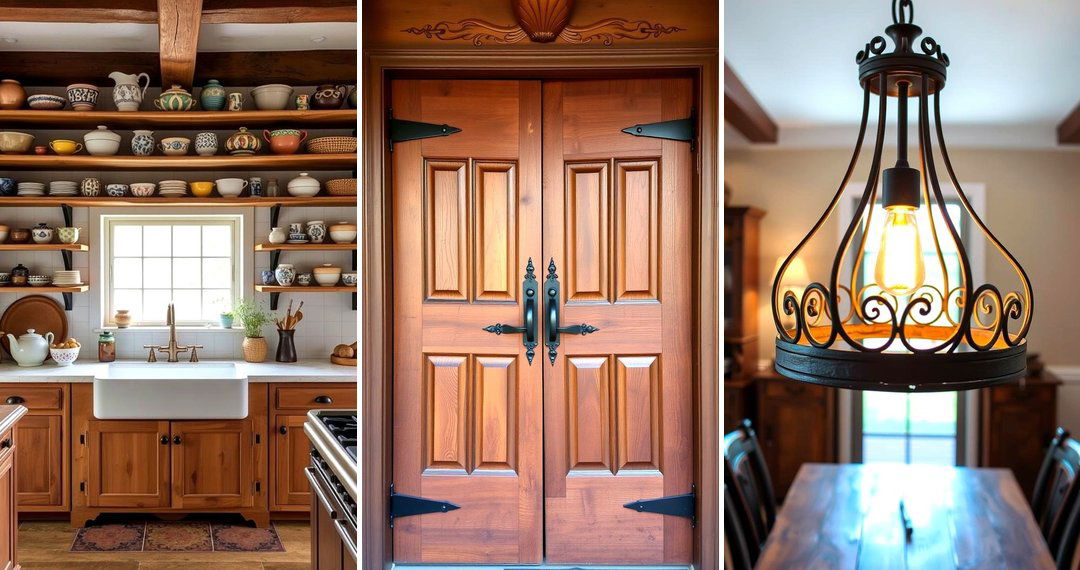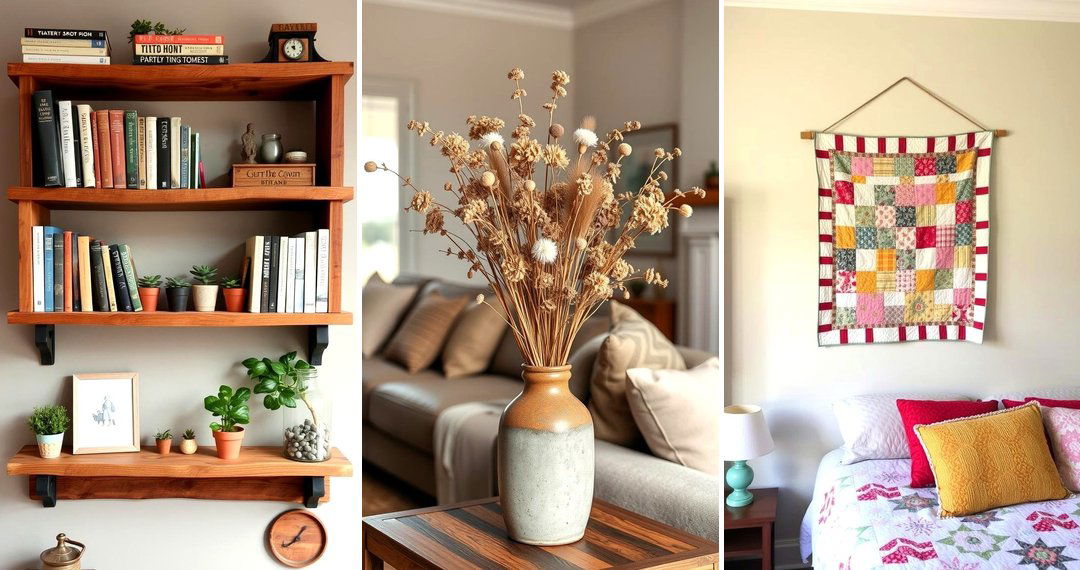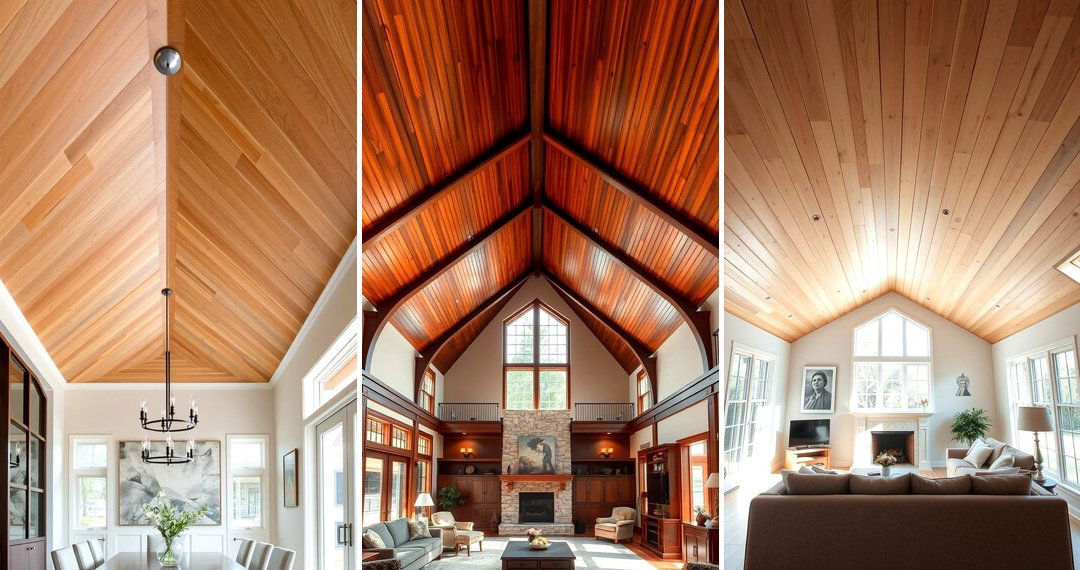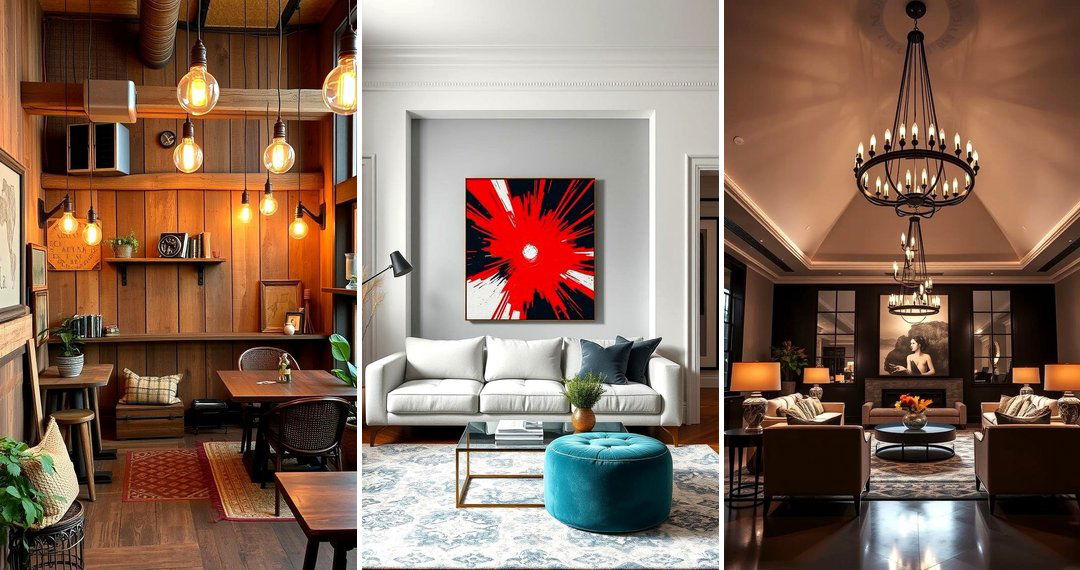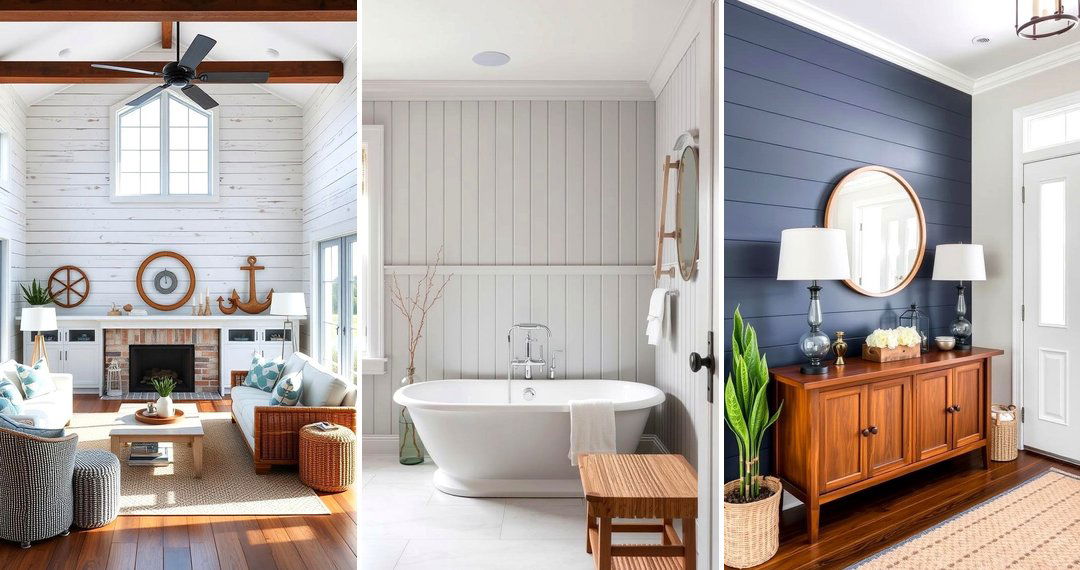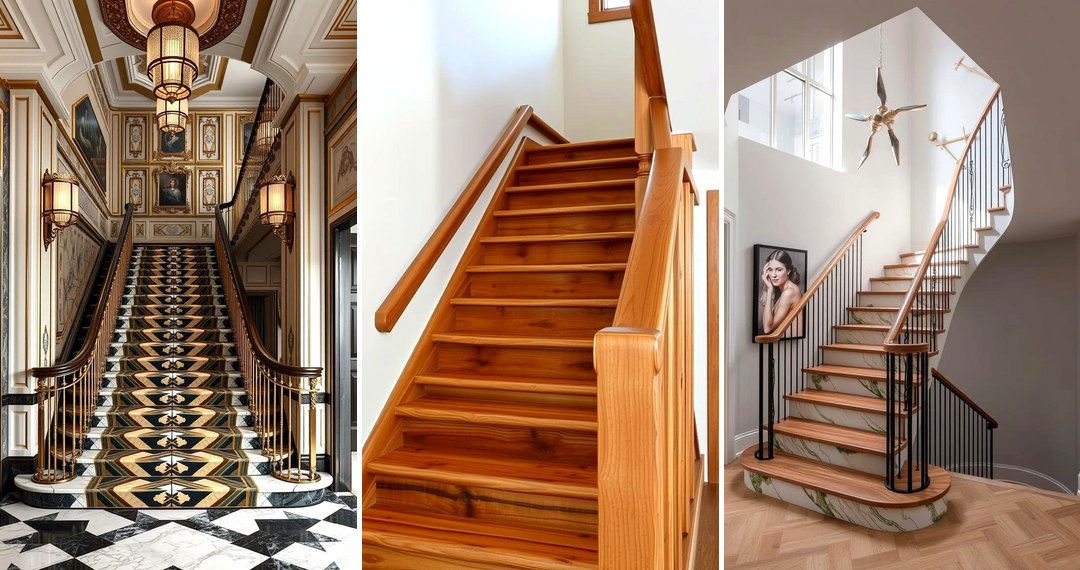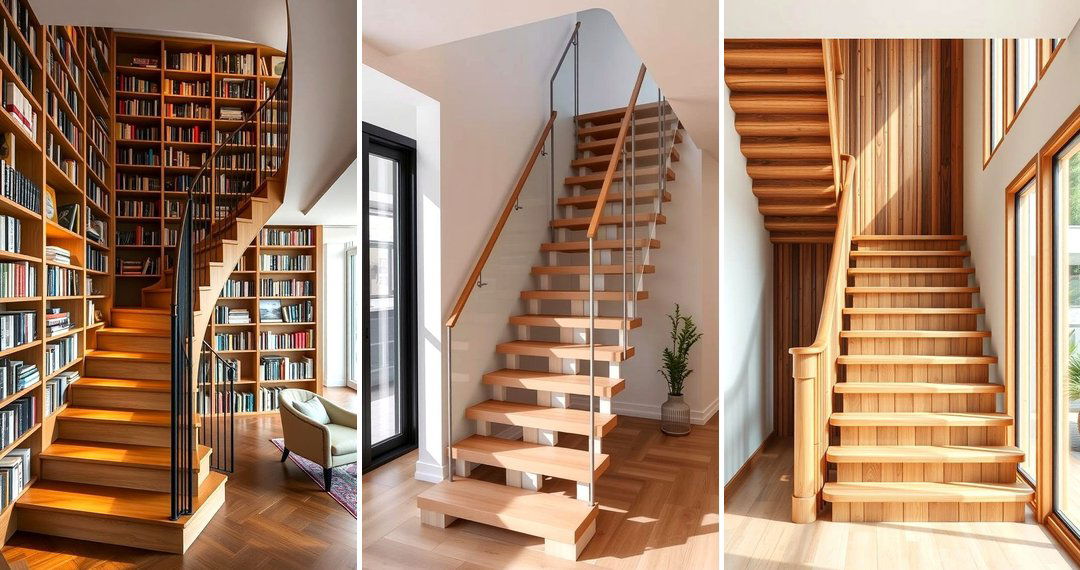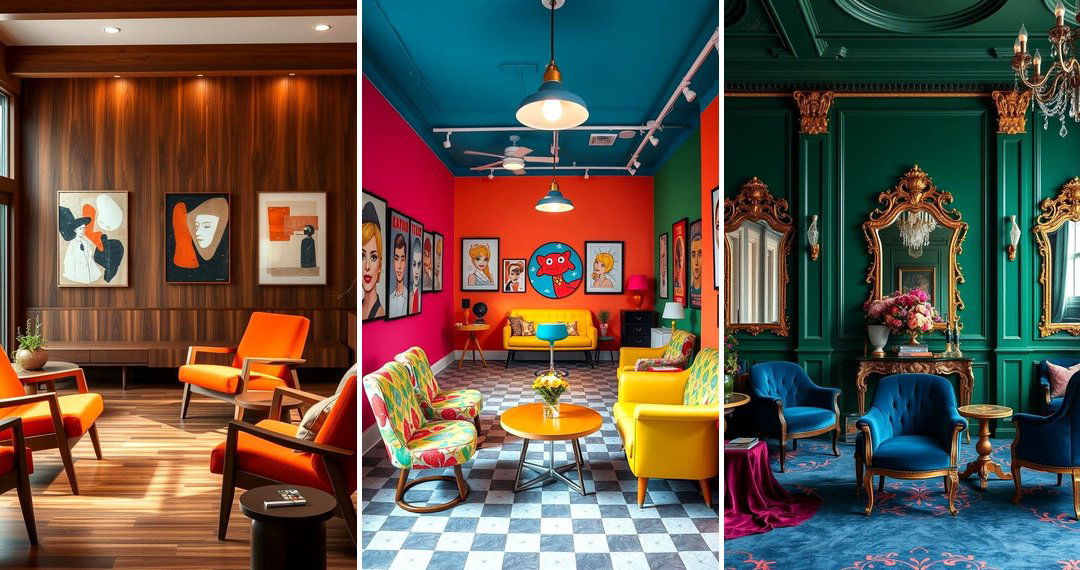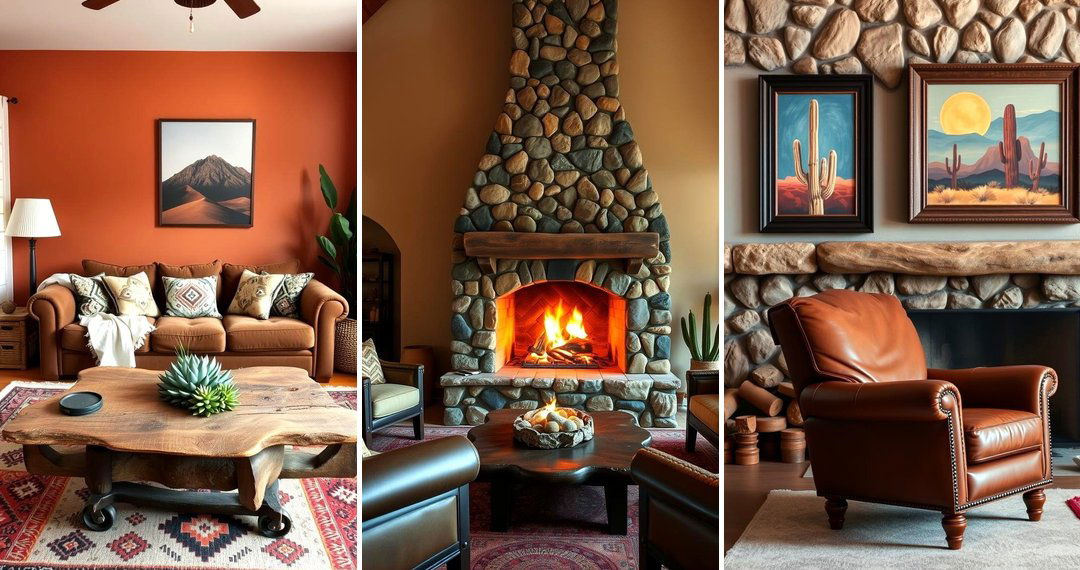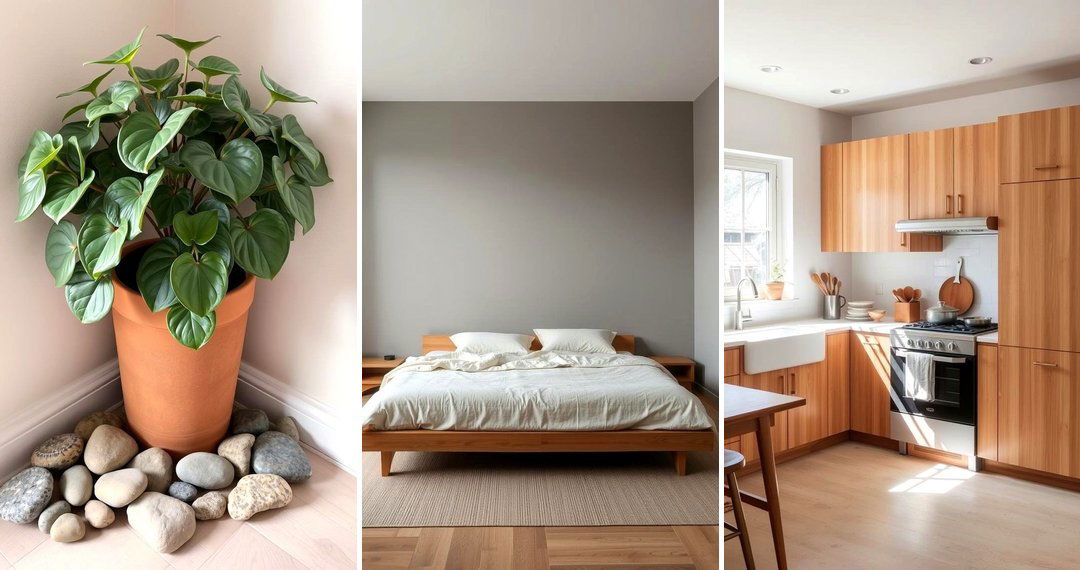Mediterranean design evokes a sense of tranquility, warmth, and timeless beauty. Whether you're drawn to the allure of sun-drenched spaces, rustic charm, or elegant coastal details, Mediterranean interiors offer a diverse range of possibilities. The design combines elements from various Mediterranean countries, each with its own unique characteristics. From vibrant colors to natural textures, Mediterranean style celebrates relaxed living and emphasizes natural materials. It’s a celebration of simplicity, elegance, and a close connection with nature. By incorporating these ideas into your own home, you can create a sanctuary that transports you to the Mediterranean coast.
Explore these 24 Mediterranean Interior Design Ideas and be inspired by their beauty and functionality. Transform your space with these practical, stylish elements that embody the spirit of Mediterranean living.
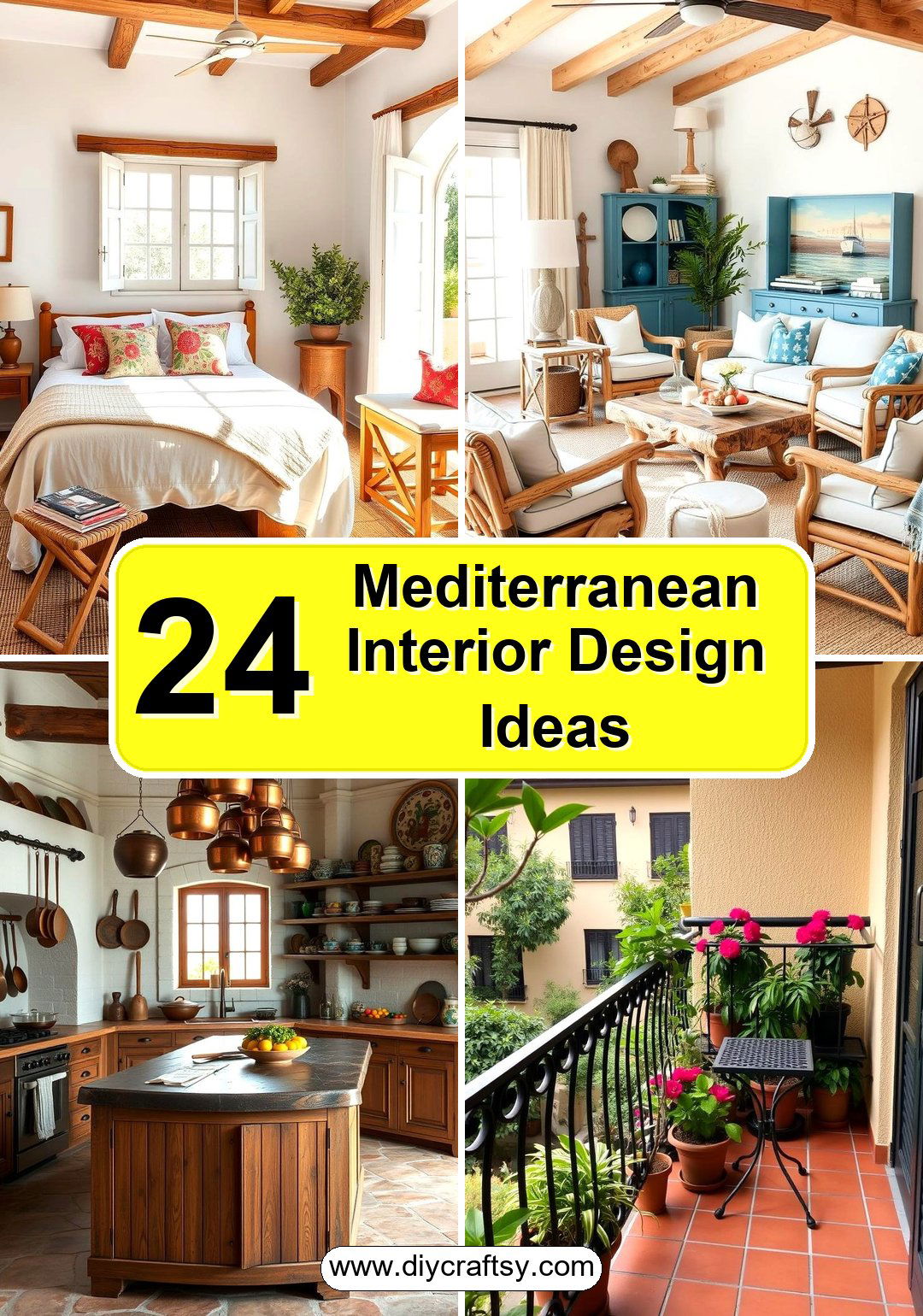
1. Vibrant Color Palettes

The Mediterranean design style is characterized by rich and vibrant color schemes, often inspired by the natural surroundings of the coast. Think terracotta reds, ocean blues, and sun-kissed yellows. These hues evoke a sense of warmth, tranquility, and energy. Not only do these colors create a welcoming atmosphere, but they also reflect the beauty of the Mediterranean landscape, connecting your home with nature. Adding these colors to walls, accent pieces, or even textiles can instantly transform a room and make it feel more lively and connected to the outdoors.
2. Natural Wood Accents
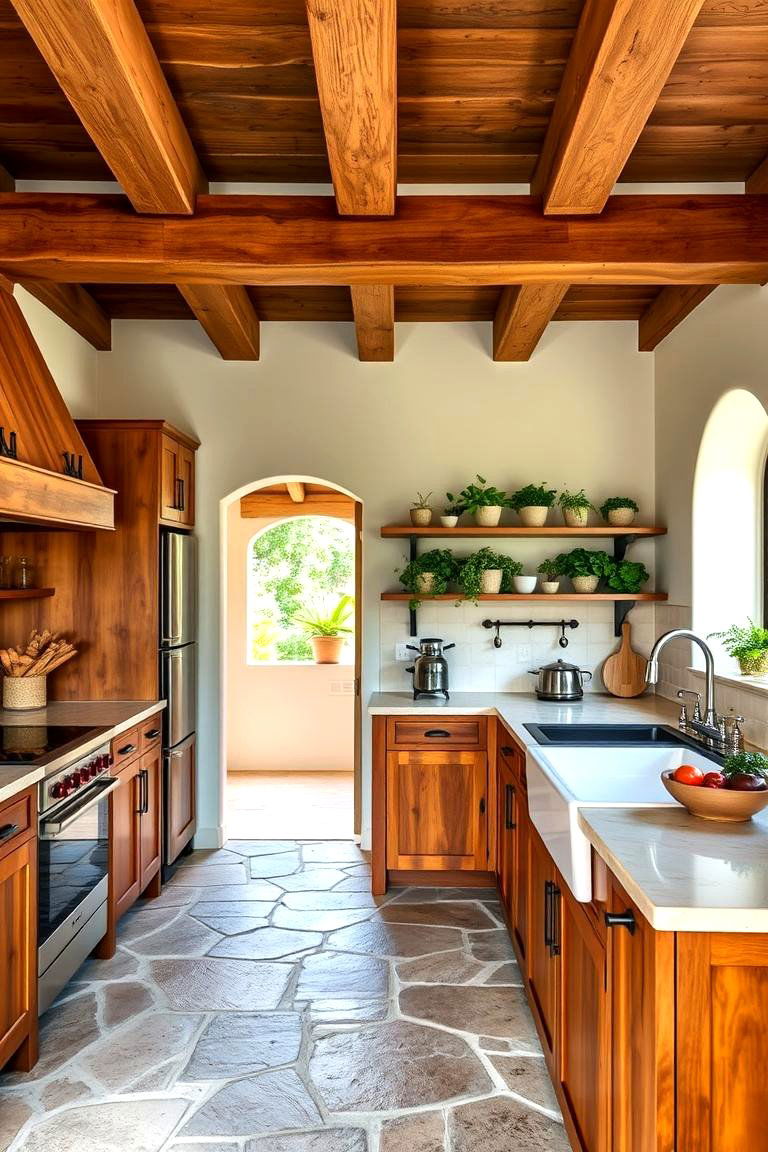
Wood elements are a key feature in Mediterranean design, adding a natural and earthy touch to interiors. Whether it's wooden beams in the ceiling, rustic furniture, or reclaimed wood floors, this material brings warmth and character to the space. The natural grain and texture of the wood enhance the overall ambiance, giving a sense of organic beauty. Wood accents work well with light, airy fabrics and vibrant colors, creating a balanced and cozy feel in your home.
3. Light and Airy Fabrics

Incorporating light, breathable fabrics is essential for achieving the Mediterranean look. Linen, cotton, and soft wool are perfect for curtains, cushions, and upholstery. These materials not only allow natural light to filter through but also create an inviting atmosphere with their soft textures. Light fabrics also enhance the flow of air, which is ideal for coastal regions where the Mediterranean climate shines. These fabrics add a sense of casual elegance while keeping the space cool and relaxed.
4. Mediterranean Tile Designs
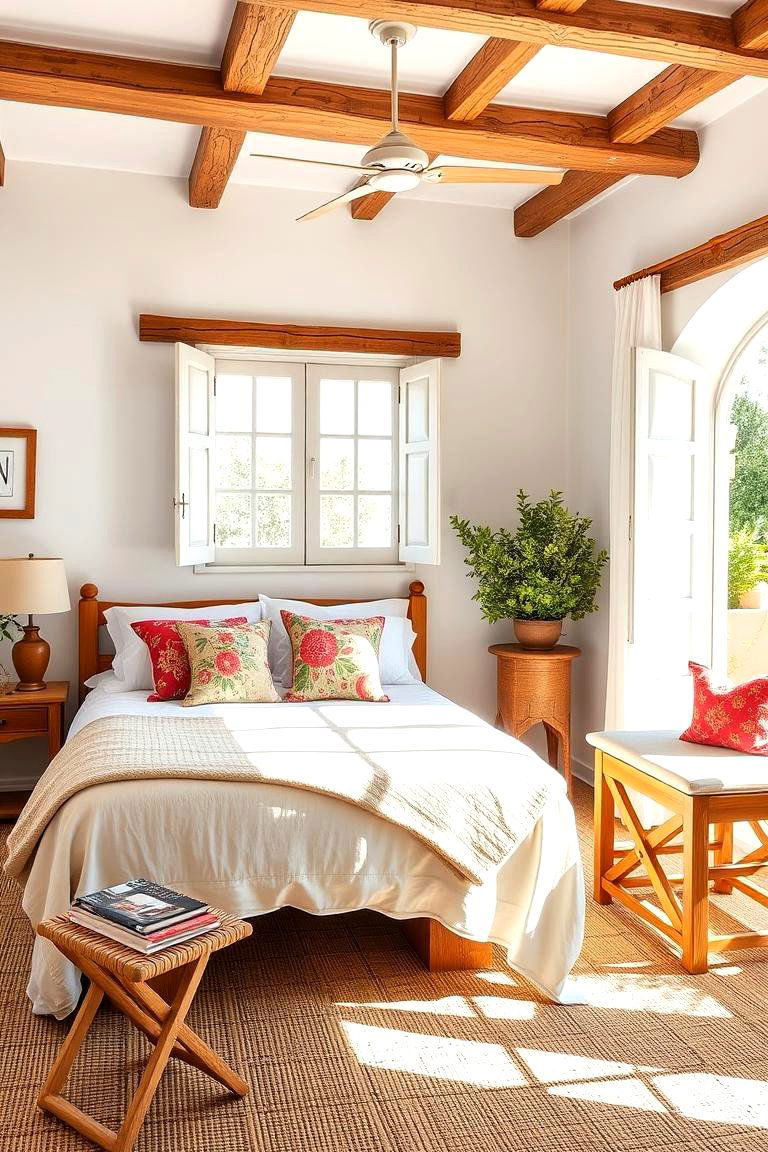
Tiles are a signature feature in Mediterranean interiors, adding both beauty and practicality. From colorful Moroccan-inspired patterns to intricate Spanish ceramics, tiled floors, backsplashes, and even walls bring a touch of artistry to any room. These tiles often come in vibrant, bold colors and geometric patterns, making them a perfect choice for kitchens, bathrooms, and entryways. They are not only visually striking but are also durable and easy to clean, making them a functional addition to your home.
5. Open, Flowing Layouts
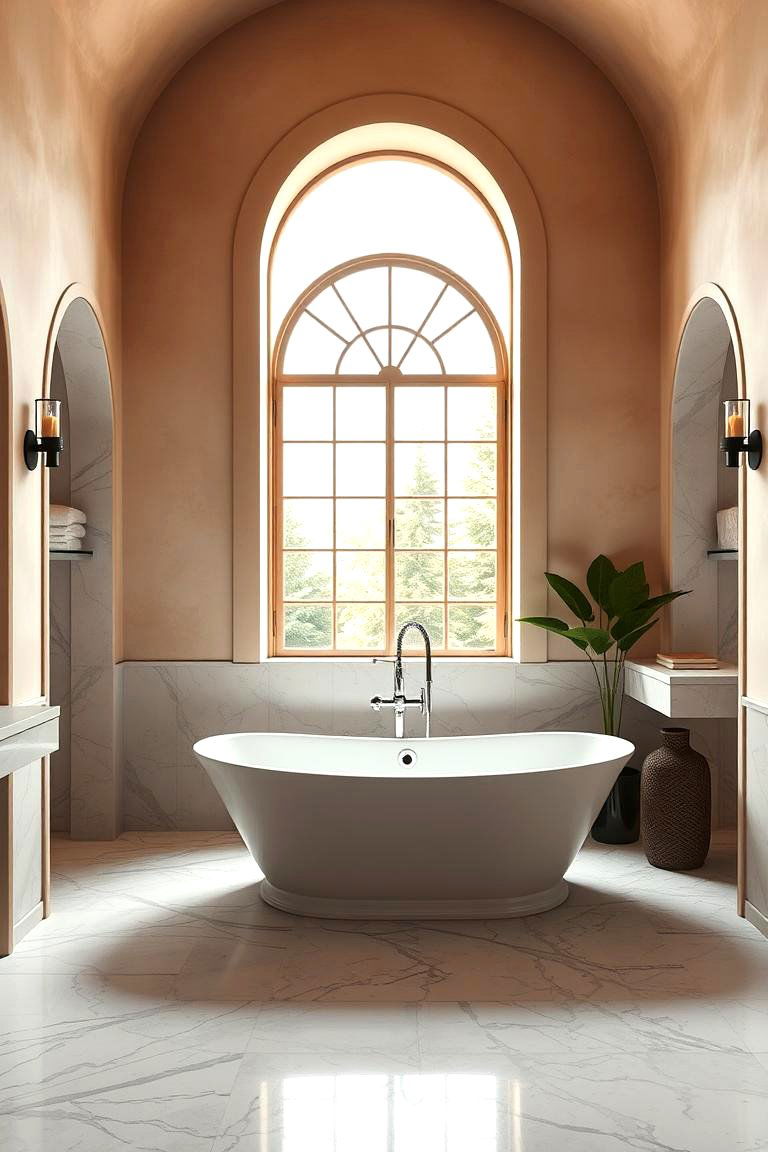
A hallmark of Mediterranean design is its open and airy layout, which promotes a sense of freedom and connectivity. Large windows, open doorways, and spacious living areas encourage a seamless transition between indoor and outdoor spaces. This design element brings in natural light and allows you to enjoy the surrounding views, whether you have a garden, patio, or breathtaking coastal scenery. By prioritizing openness, you create a home that feels expansive and inviting, perfect for gatherings or quiet relaxation.
6. Neutral Base with Colorful Accents

Mediterranean interiors often begin with neutral tones, such as whites, creams, or light grays, that form the foundation of a room. These soft shades allow the bolder Mediterranean colors to shine through in accents like throw pillows, rugs, and artwork. The neutral base creates a calming atmosphere, while the bright accents bring energy and personality. By mixing and matching these elements, you can create a harmonious balance between serenity and vibrancy, which is central to Mediterranean design.
7. Arched Doorways and Windows
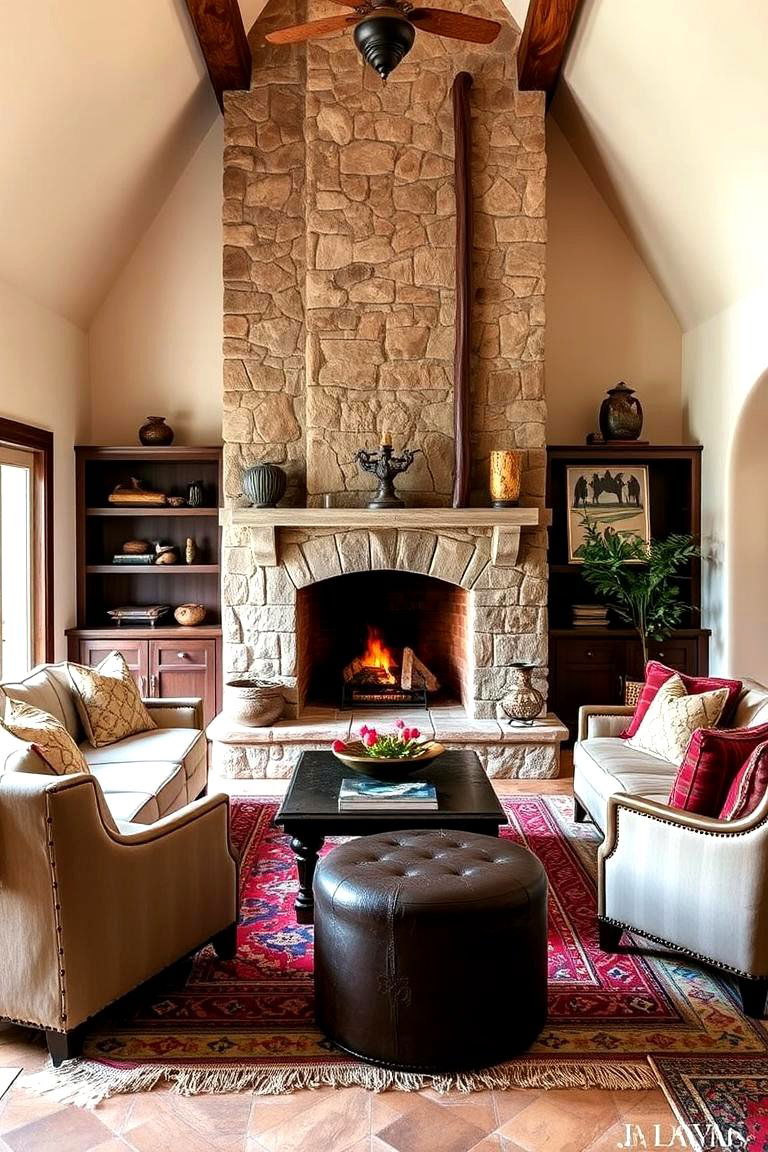
Architectural details such as arched doorways and windows are a key feature of Mediterranean interiors. These arches not only add elegance but also evoke the charm of Mediterranean villas and coastal homes. The smooth curves help soften the lines of a room, creating a sense of flow and openness. Arched windows allow for a panoramic view of the outdoors while letting in plenty of natural light. This timeless feature enhances the Mediterranean style, giving your home a welcoming, refined atmosphere.
8. Cozy Nooks and Seating Areas
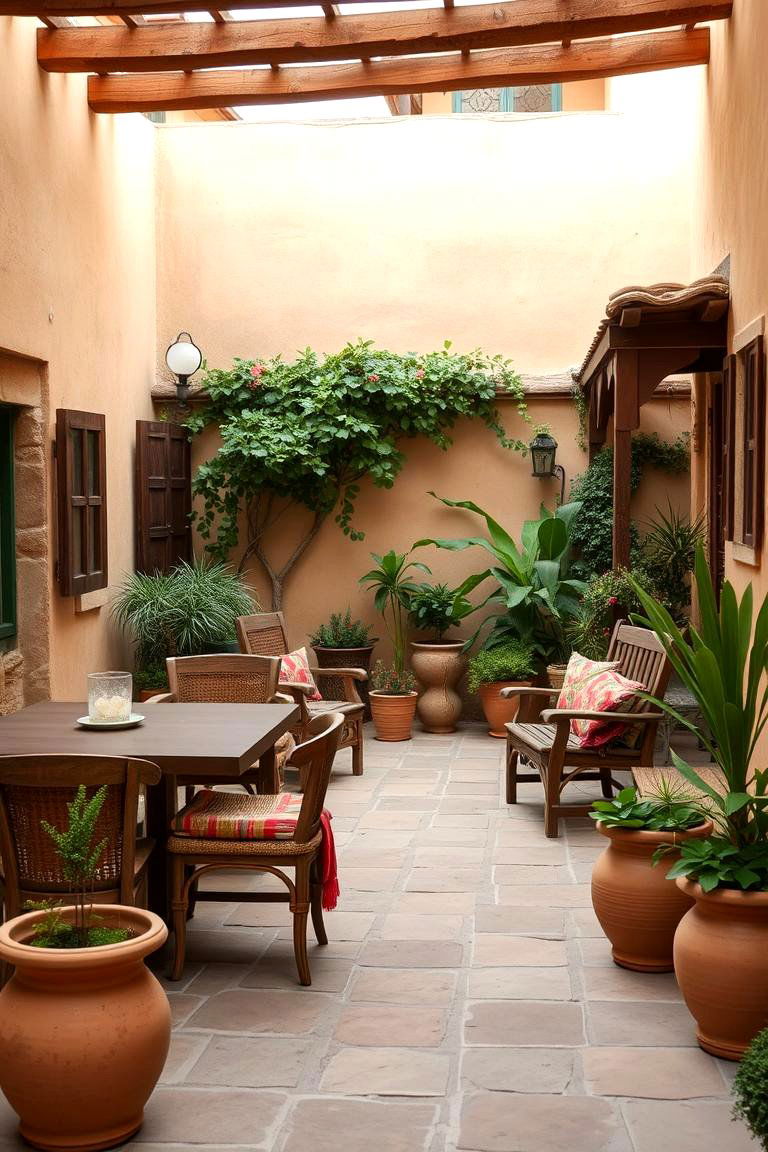
Creating intimate spaces within a room is a signature element of Mediterranean interior design. Whether it’s a small reading nook or a cozy seating area by a window, these spaces invite relaxation and connection. You can incorporate comfortable armchairs, soft cushions, and even small tables for added functionality. These cozy corners promote a sense of comfort and are perfect for enjoying a book, having a conversation, or simply unwinding with a cup of tea.
9. Indoor Plants for a Natural Touch

Bringing the outdoors in is a fundamental principle of Mediterranean design. Indoor plants, such as olive trees, fig trees, and large potted plants, infuse your space with natural beauty and freshness. These plants not only add color and texture but also contribute to a healthier indoor environment by purifying the air. Incorporating greenery throughout your home adds life and energy while staying true to the organic, nature-inspired aesthetic of Mediterranean design.
10. Wrought Iron Details
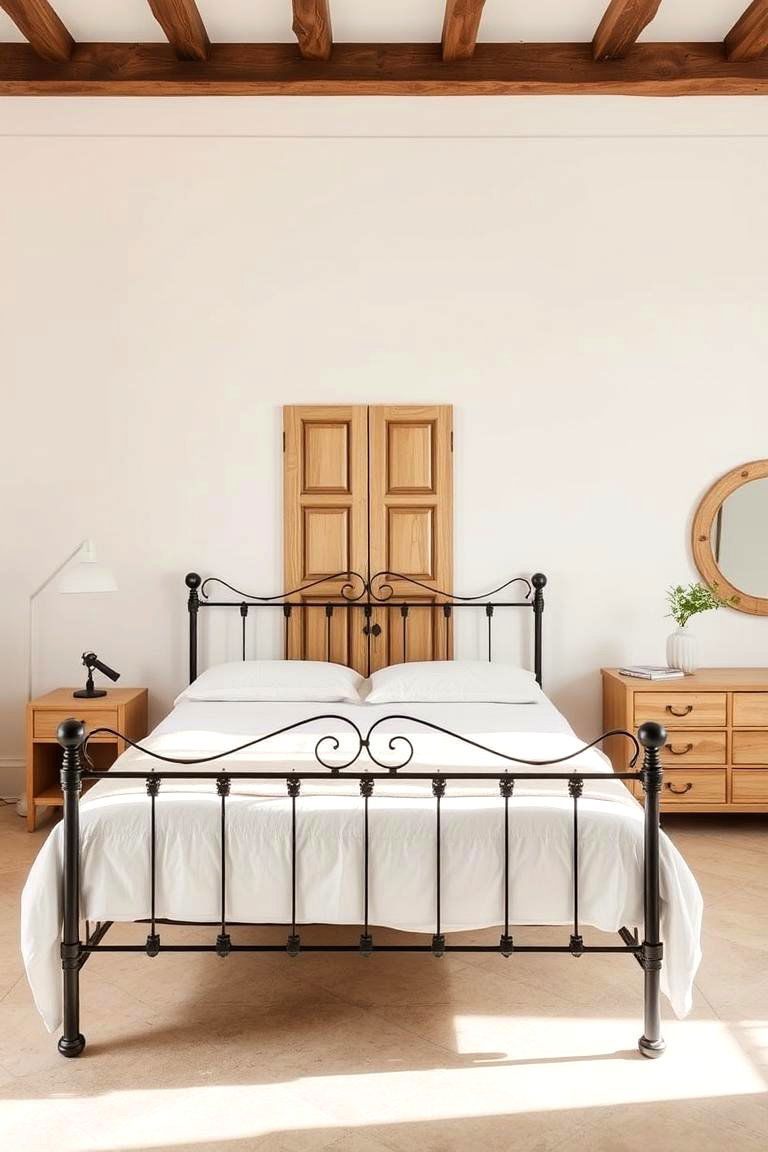
Wrought iron is a versatile material used in Mediterranean design to add rustic elegance. From chandeliers to railings and decorative accents, wrought iron elements bring an old-world charm to any room. The intricate patterns and sturdy, earthy feel of wrought iron create a timeless contrast with lighter fabrics and wooden surfaces. This balance of materials gives the space depth, warmth, and texture, making it a quintessential feature of Mediterranean interiors.
11. Cozy Fireplaces
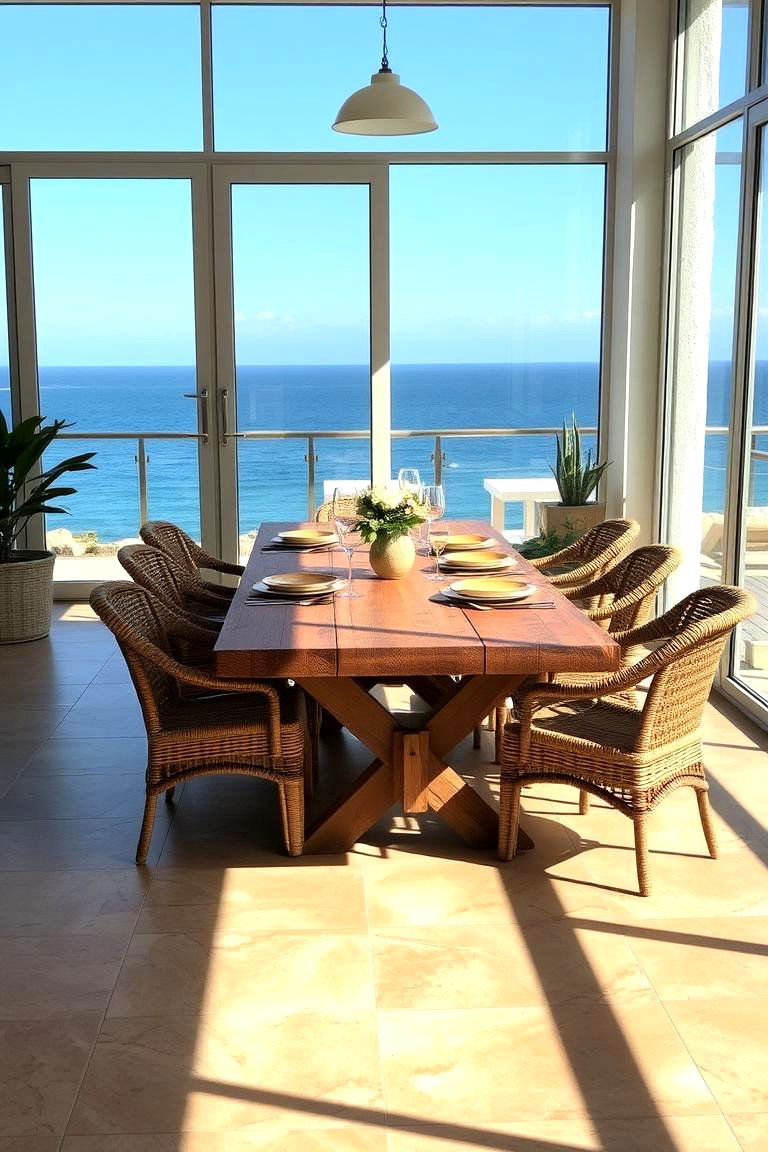
A fireplace is not just a functional feature; it’s a central gathering place in Mediterranean homes. Often made from stone or rustic tiles, Mediterranean fireplaces evoke a sense of warmth and coziness. The soothing crackle of firewood complements the room’s inviting atmosphere. In larger homes, a fireplace can serve as a focal point in the living or dining room, offering both beauty and practicality during the colder months.
12. Mediterranean-Inspired Lighting Fixtures

Lighting plays an essential role in Mediterranean design, providing both functionality and aesthetic appeal. Consider incorporating wrought iron chandeliers, lantern-style lamps, or wall sconces with intricate details. These fixtures not only offer practical illumination but also become statement pieces in the room. When placed strategically, Mediterranean-inspired lighting creates soft, ambient light that highlights the room’s textures and colors, contributing to a warm and inviting atmosphere.
13. Textured Walls for Added Depth

In Mediterranean design, walls are often treated with textures that give depth and character to the space. Plastered or stucco finishes, often in soft pastel or earthy tones, provide a rustic and timeless appeal. These finishes create a sense of authenticity, reminiscent of Mediterranean villages and coastal retreats. Textured walls also add dimension and interest to otherwise plain surfaces, allowing for a more dynamic, layered environment.
14. Statement Art and Murals

Art plays a significant role in Mediterranean design, often serving as a focal point within a room. Large, bold pieces of art or murals inspired by Mediterranean landscapes, culture, and history can transform any space. Whether it’s a vibrant painting or a tiled mural, these artistic features contribute to the room’s overall personality and can evoke emotions or tell a story. Incorporating statement art pieces can add sophistication and cultural richness to your home.
15. Mediterranean-Inspired Rugs
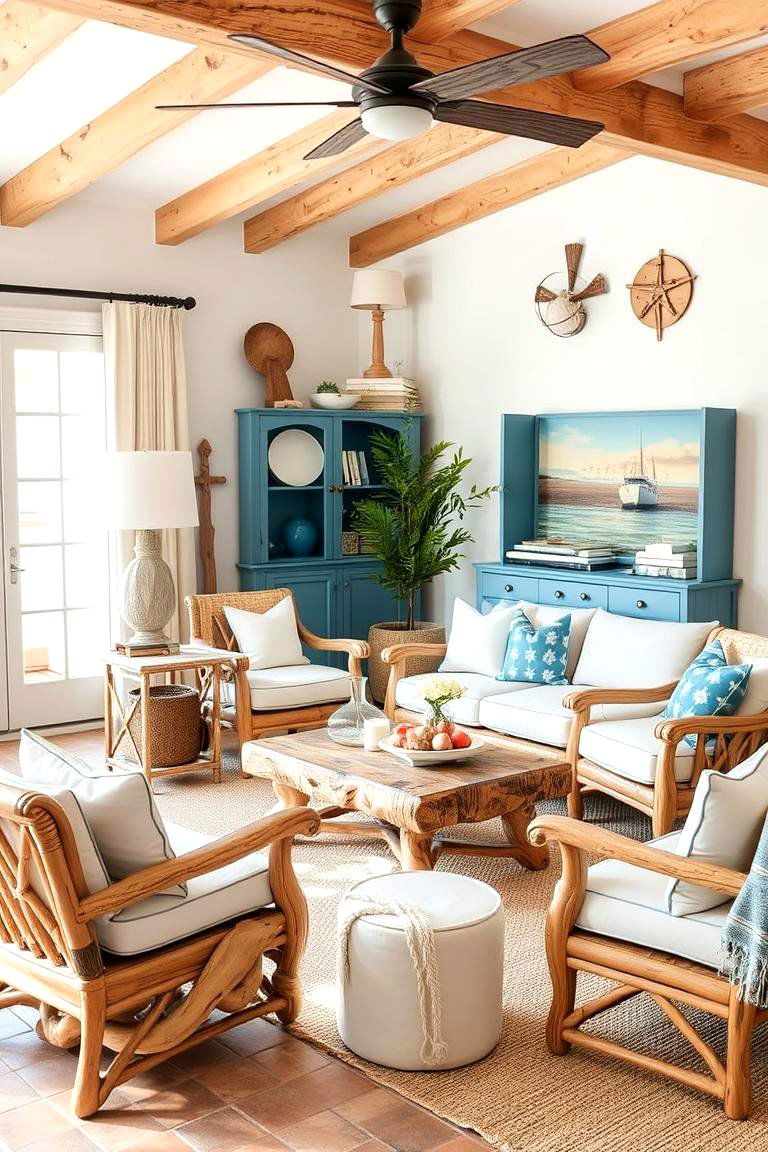
Rugs are an important design element in Mediterranean homes, adding warmth, texture, and color to the space. Mediterranean rugs often feature intricate patterns, rich colors, and a touch of rustic charm. Whether placed in the living room, bedroom, or hallway, these rugs anchor the space and add an additional layer of comfort. Look for rugs made from natural fibers like wool or cotton for an authentic feel.
16. Rustic Dining Spaces

A Mediterranean dining space is often designed to be welcoming and informal, encouraging family gatherings and shared meals. Wooden dining tables with sturdy, rustic chairs are common in this style, creating an environment that is both inviting and practical. Mediterranean dining spaces are often complemented by overhead lighting, terracotta pottery, and large, rustic wooden shelving. These elements work together to create a warm, communal atmosphere.
17. Stone Accents and Features

Stone is a classic material in Mediterranean design, often used in walls, floors, and even furniture. Natural stone, such as travertine or limestone, brings a sense of earthiness and permanence to a space. The texture and colors of stone can add richness to any room, particularly in kitchens, bathrooms, and entryways. Stone accents help reinforce the Mediterranean connection to nature, creating a timeless, rustic appeal.
18. Open Shelving

Open shelving is a popular choice in Mediterranean kitchens and living spaces. It creates an airy, open feel and allows you to showcase beautiful ceramics, pottery, and other decorative items. This practical design choice also encourages organization and easy access to frequently used items. Open shelving is perfect for displaying a curated collection of Mediterranean-inspired décor, such as colorful plates, vases, or plants.
19. Vintage and Antique Touches
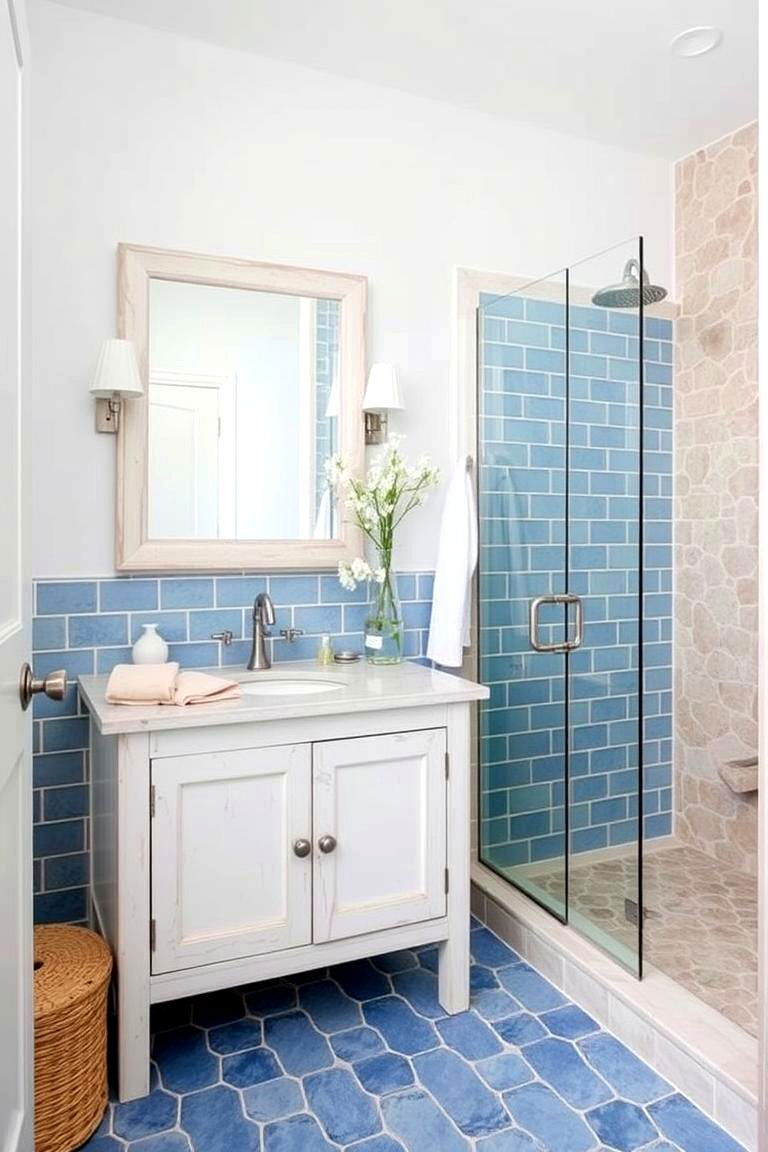
Incorporating vintage or antique pieces is a hallmark of Mediterranean design. Whether it’s an old wooden cabinet, a weathered mirror, or a vintage rug, these items bring history and personality to the space. Antique touches add character and a sense of authenticity, contributing to the timeless and rustic charm that defines Mediterranean interiors.
20. Outdoor Living Spaces
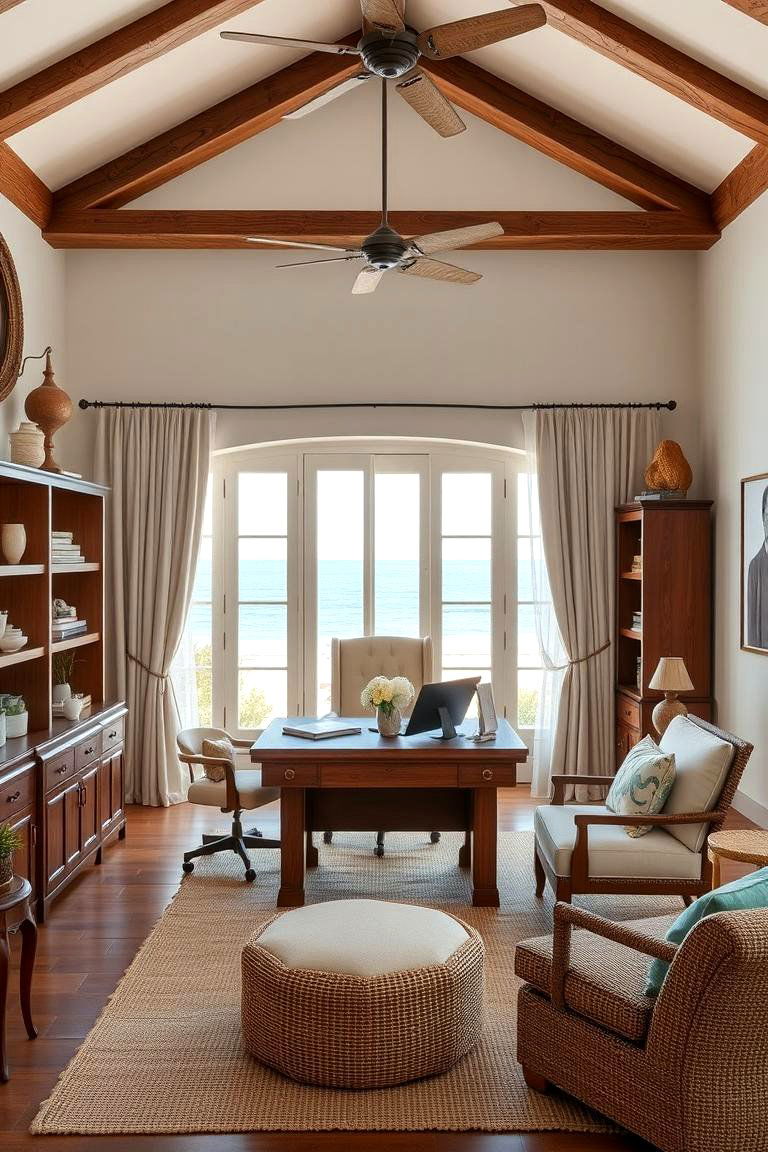
The Mediterranean lifestyle is centered around enjoying the outdoors, and this is reflected in the interior design. Patios, terraces, and balconies are often seamlessly integrated into Mediterranean homes. Comfortable outdoor furniture, natural stone flooring, and lush greenery create a perfect space for al fresco dining or relaxation. By blending indoor and outdoor living, you can create an inviting and connected environment.
21. Soft, Relaxed Upholstery
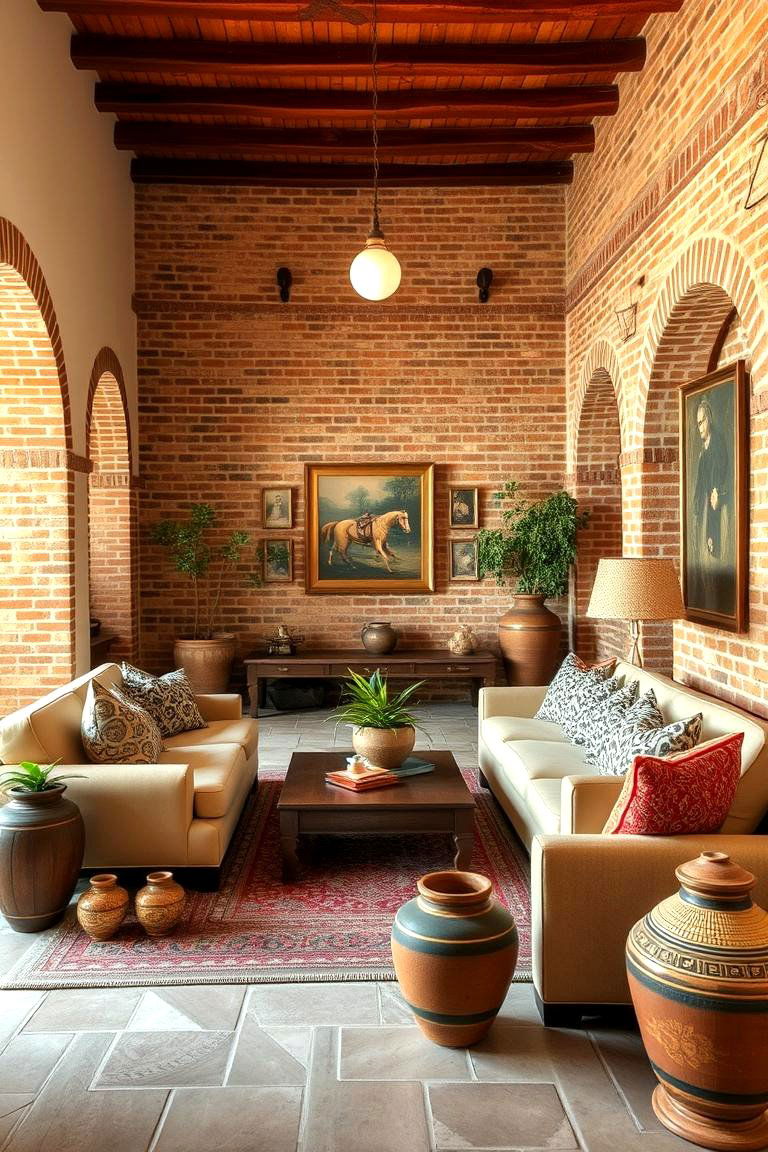
Comfortable seating is essential in Mediterranean design, with sofas and chairs featuring soft, relaxed upholstery. Cushioned seating with plenty of pillows invites relaxation and leisure. The upholstery often includes natural fabrics such as linen or cotton, which complement the overall relaxed vibe of the space. Soft seating is key to creating a welcoming, casual atmosphere where you can unwind and enjoy time with loved ones.
22. Elegant Entryways

The entryway sets the tone for the rest of the home, and in Mediterranean design, it’s no different. Arched doors, terracotta floors, and vibrant plants are commonly seen in Mediterranean entryways. This space should feel open and inviting, welcoming guests into your home with warmth and style. A well-designed entryway provides a glimpse into the overall Mediterranean aesthetic and creates a lasting first impression.
23. Elegant Marble Features
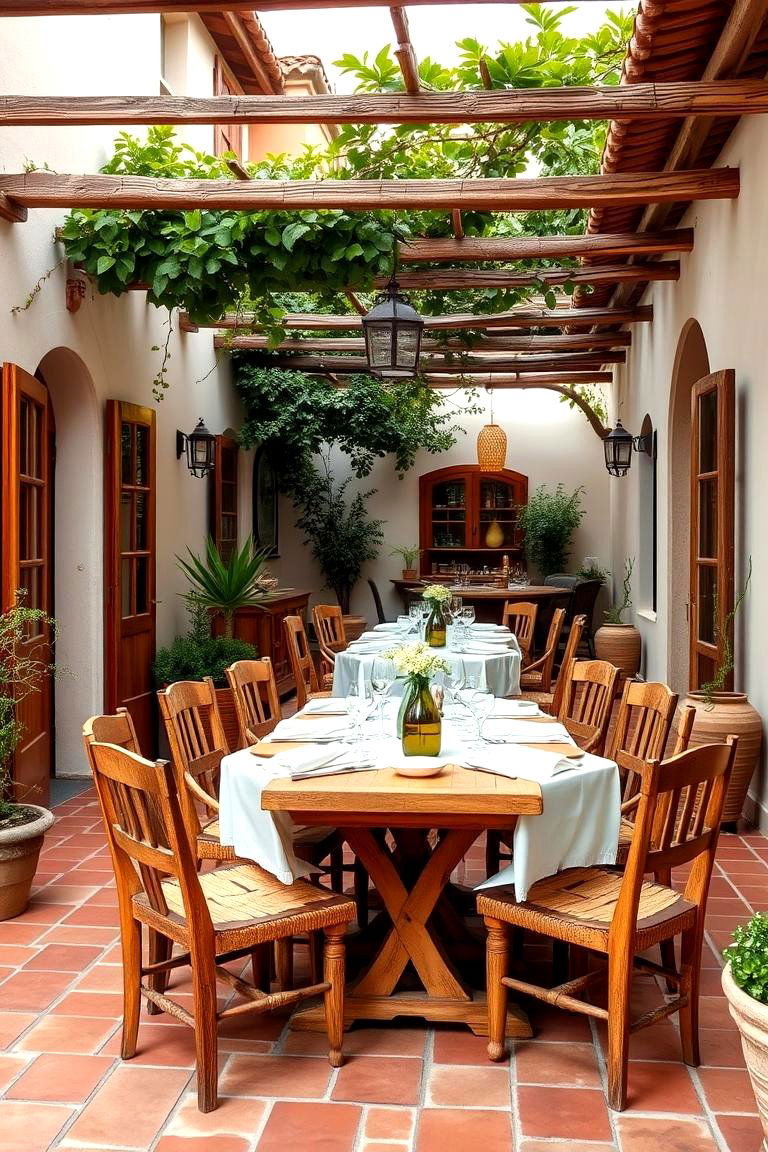
Marble is an iconic material in Mediterranean design, often used in countertops, flooring, or even as decorative accents. Its sleek, polished surface adds an air of sophistication and timeless elegance. White or cream-colored marble, often combined with natural wood elements, helps create a sense of balance and luxury. The use of marble in Mediterranean interiors enhances the sense of refinement and provides an easy way to elevate the look of any room.
24. Coastal-Inspired Elements

Finally, a Mediterranean home often incorporates coastal-inspired elements to celebrate its connection to the sea. Nautical themes, like driftwood furniture, marine-inspired color palettes, and natural textures such as ropes and shells, evoke the spirit of the coast. Whether you’re incorporating these items subtly or as a bold statement, coastal elements contribute to the overall relaxed and carefree Mediterranean aesthetic.
Conclusion:
Mediterranean interior design is an invitation to create spaces filled with warmth, natural beauty, and timeless elegance. Whether you’re incorporating vibrant colors, rustic wood accents, or Mediterranean-inspired art, each element serves to create a sense of calm and connection to nature. By integrating these ideas into your home, you can embrace the Mediterranean lifestyle and bring a little piece of the coast into your living space. With the right design elements, your home can become a tranquil retreat filled with beauty and comfort.


